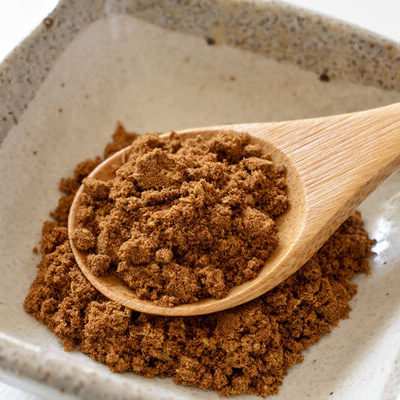
Five Spice
What is Five Spice?
Five spice powder is a mixture of several spices that is predominantly used in Chinese cuisine. It is also a mainstay of other East and South-East Asian countries.
- The actual mixture may include more than five spices, though the most common ones used are star anise, cinnamon or cassia, cloves, Sichuan peppercorns, and fennel seeds.
- It may also contain other spices such as ginger, nutmeg, turmeric, galangal, Mandarin orange peel, white or black pepper, and licorice.
The top 10 most popular five spice brands are:
- Spice Supreme
- The Spice Way
- Natural Plus Green
- Frontier Co-op
- McCormick Culinary
- Oldman Que Huong
- Simply Organic
- Collected Foods
- Usimply Season
- Spicy World
Origin of five spice
The actual origin of this powder is not known, though it is believed that the spice originated in China in the 4th century BC. One theory is that this was the result of the Chinese trying to create a wonder mix. The spices represent the five elements of the Chinese zodiac: wood, fire, earth, metal, and water. Also, the spices offer a mixture of the sweet, bitter, sour, salty, and umami flavors. This mixture is used in Traditional Chinese medicine for its healing properties, and represents a balance of the flavors between yin and yang.
Nutrition
A quarter teaspoon of five spice contains:

The different ingredients that make up the five spice powder all possess healing properties. Cinnamon helps lower blood sugar levels and can help control diabetes. It also has properties that can assist in maintaining good heart health. Star anise possesses antiviral properties. Also, it may be used for its antioxidant, antifungal, anti-inflammatory, and estrogenic effects. This spice helps in managing gastric problems, as well.
Clove is rich in antioxidants and has antimicrobial properties. It may also help in managing or preventing cancer. Sichuan pepper can provide therapeutic effects on a wide range of chronic diseases. Fennel has been known to help in healing digestive, reproductive, and respiratory disorders. Additionally, it helps in balancing the endocrine system. Spices in general are rich in antioxidants and can help protect the body against a wide range of ailments.
Commercial production
The key ingredients of this Chinese powder are star anise, cinnamon or cassia, cloves, Sichuan peppercorns, and fennel seeds. These ingredients are roasted and blended together to prepare a dry powder, which can be used in different dishes. Different brands use different proportions of these ingredients in their recipes. Some brands may also add other spices to the mix to give it a unique taste. It must be stored in an airtight container in a dark, cool, and dry place for longer shelf life. It must be discarded when it begins to lose its pungent odor.
Five spice recipes
Traditionally, this powder was used in preparing fatty meat marinade dishes. Also, it is a favorite ingredient in preparing stews and soups. It is often added to stir-fries and spiced nuts, as well. This spice mix is a key component of red cooking in Chinese cuisine. Here are a few popular recipes to try:
- Five Spice Rice
- Pork Lo Mein
- Tilapia
- 5-Spice Chicken With Vegetable Stir-Fry
- Chinese Spice Cake with Ginger Frosting
- Orange Fruit Salad with Five-Spice Powder
- Spiced Roasted Duck
- Tofu Stir Fry
- Spiced Cookies
- Apple Cake
FDA regulations
The FDA classifies spices as substances generally recognized as safe. Spice is defined as any aromatic vegetable substance in whole, broken, or ground form, whose function in food is seasoning rather than nutritional.
References
Diane Vizthum, 5 Spices with Healthy Benefits, Health, John Hopkins Medicine, https://www.hopkinsmedicine.org/health/wellness-and-prevention/5-spices-with-healthy-benefits
Patra, Jayanta Kumar et al. “Star anise (Illicium verum): Chemical compounds, antiviral properties, and clinical relevance.” Phytotherapy research: PTR vol. 34,6 (2020): 1248-1267. doi:10.1002/ptr.6614, https://pubmed.ncbi.nlm.nih.gov/31997473/
Cortés-Rojas, Diego Francisco et al. “Clove (Syzygium aromaticum): a precious spice.” Asian Pacific journal of tropical biomedicine vol. 4,2 (2014): 90-6. doi:10.1016/S2221-1691(14)60215-X, https://www.ncbi.nlm.nih.gov/pmc/articles/PMC3819475/
Badgujar, Shamkant B et al. “Foeniculum vulgare Mill: a review of its botany, phytochemistry, pharmacology, contemporary application, and toxicology.” BioMed research international vol. 2014 (2014): 842674. doi:10.1155/2014/842674 https://www.ncbi.nlm.nih.gov/pmc/articles/PMC4137549/
